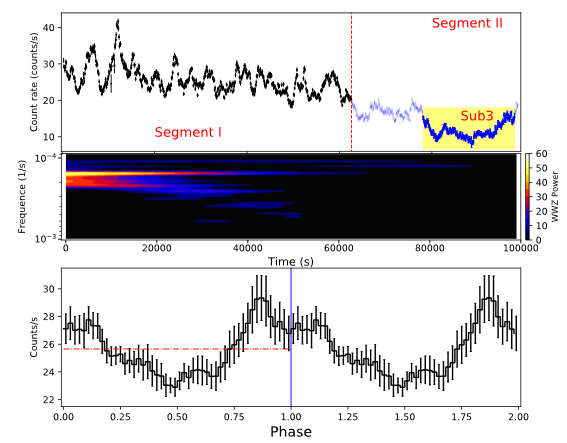Quasi-periodic emissions are an interesting phenomena of some X-ray and gamma-ray emission sources. The quasi-periodic oscillation (QPO) signal has attracted wide attention. It is widely believed to be related to the accretion in the innermost stable circular orbit (ISCO) around BHs (Remillard & McClintock 2006) and thus carries important physical information about the ISCO. In the narrow-line Seyfert 1 galaxy Mrk 766, a QPO signal with a period of ~6450 s is detected in the XMM-Newton data collected on 2005 May 31. This QPO signal has highly statistically significant at ~5σ confidence level . Furthermore, this QPO signal is present in the data of three EPIC detectors and two RGS cameras and its frequency follows the fQPO–MBH relation spanning from stellar-mass to supermassive black holes. Interestingly, a possible QPO signal with a period of ~4200 s had been reported in the former literature. The frequency ratio of these two QPO signals is ~3:2. Our result is also in support of the hypothesis that the QPO signals can just be transient. The spectral analysis reveals that the contribution of the soft excess component below ~1 keV is different between epochs with and without QPO. This property, as well as the former frequency ratio, are well-detected in X-ray BH binaries, which may shed some light on the physical origins of our event. 
By with ZHANG Pengfei Figure 1. Upper panel: XMM-Newton EPIC light curve of Mrk 766 in 0.2–10 keV, with 100 s per bin. The light curve is separated into two segments by a red dashed line. Middle panel: 2D plane contour plot of the WWZ power of the whole light curve. Lower panel: the pulse shape of the light curve is folded with Segment I using the period cycle of 6451.6 s(two cycles are shown) This work by Zhang Peng and Zhang Peng-fei et al., has been published in Astrophysical Journal (2017, ApJ, 849, 9). Detailed information of the paper can be found at: http://iopscience.iop.org/article/10.3847/1538-4357/aa8d6e/meta |
